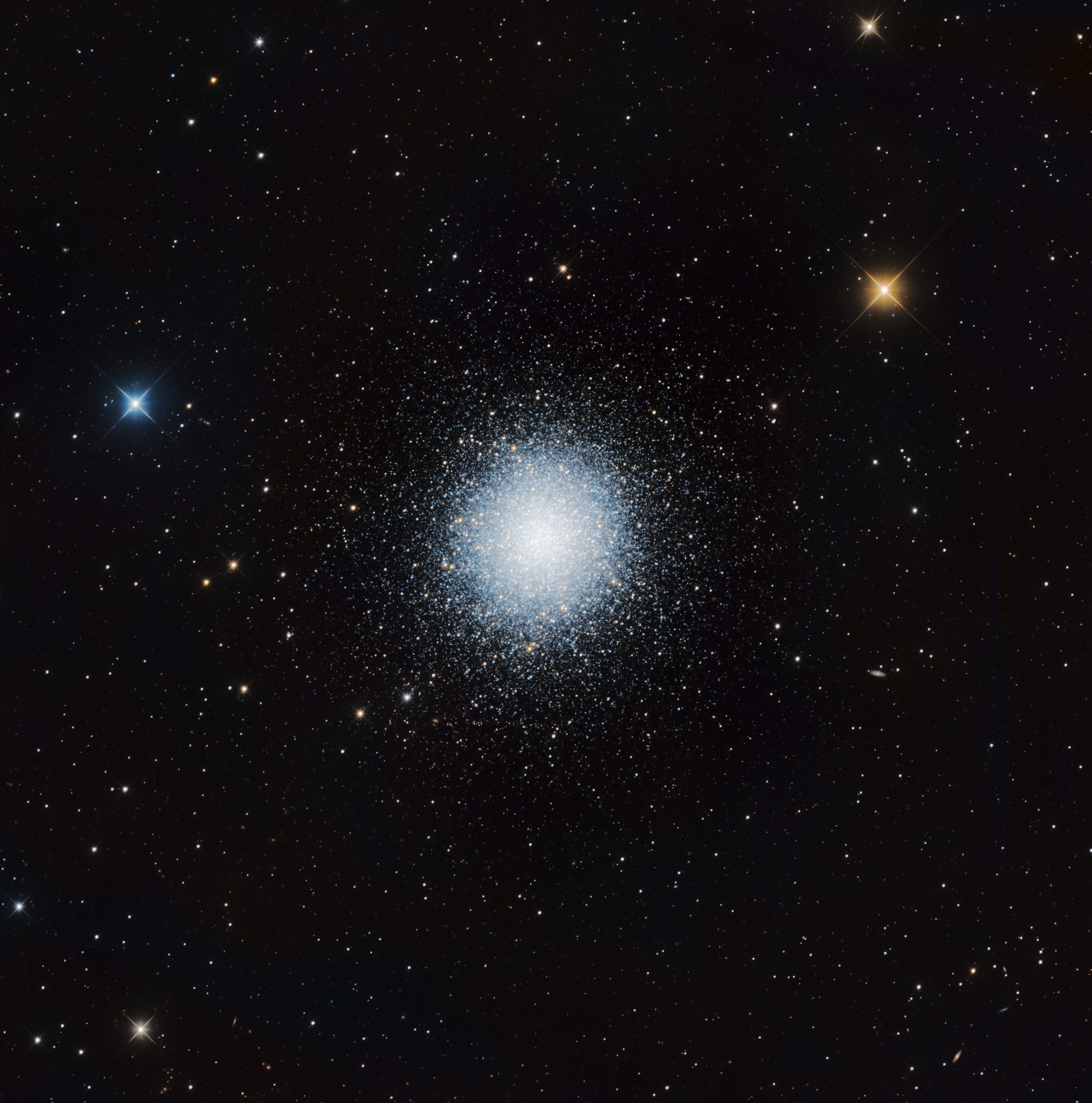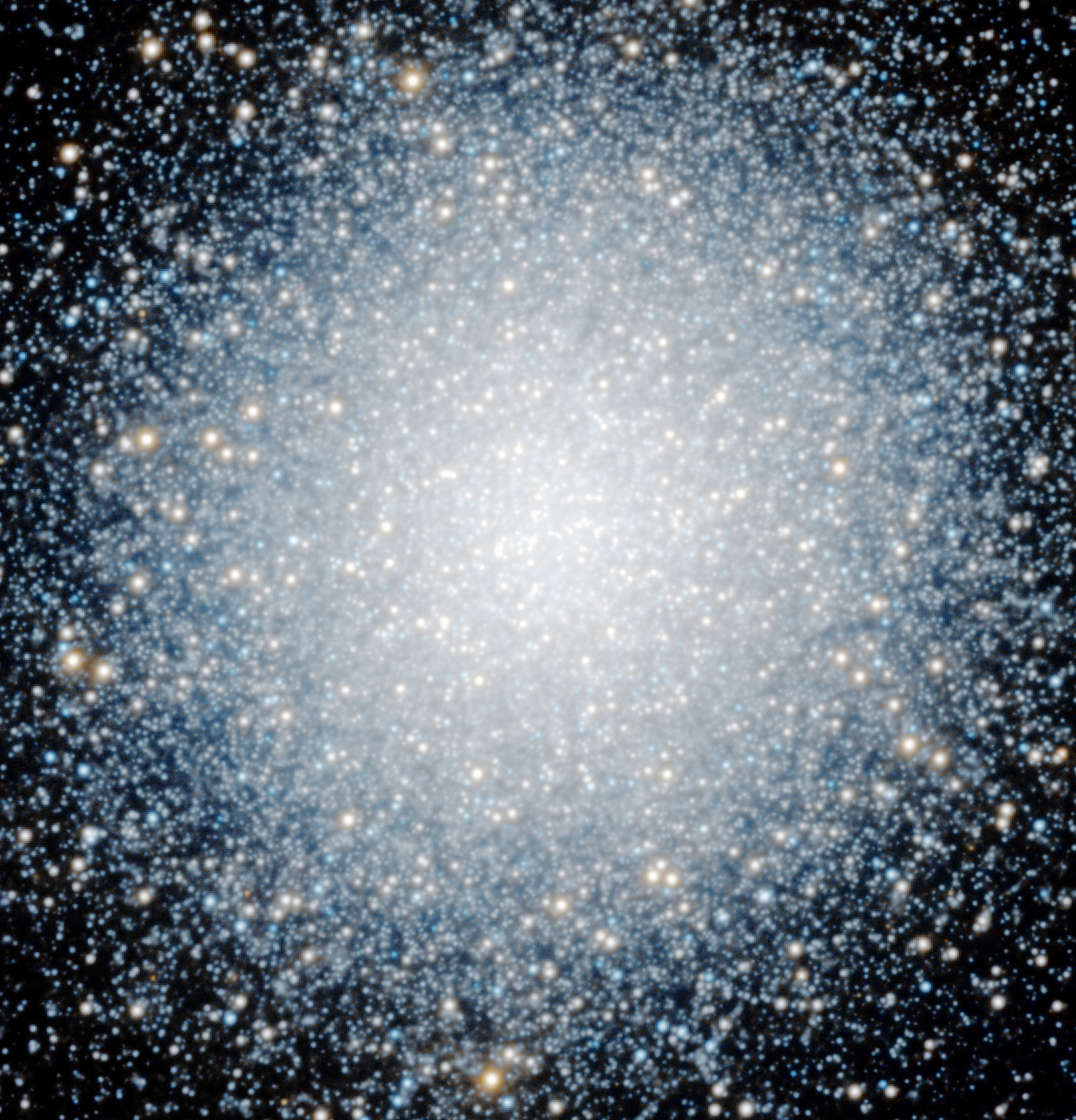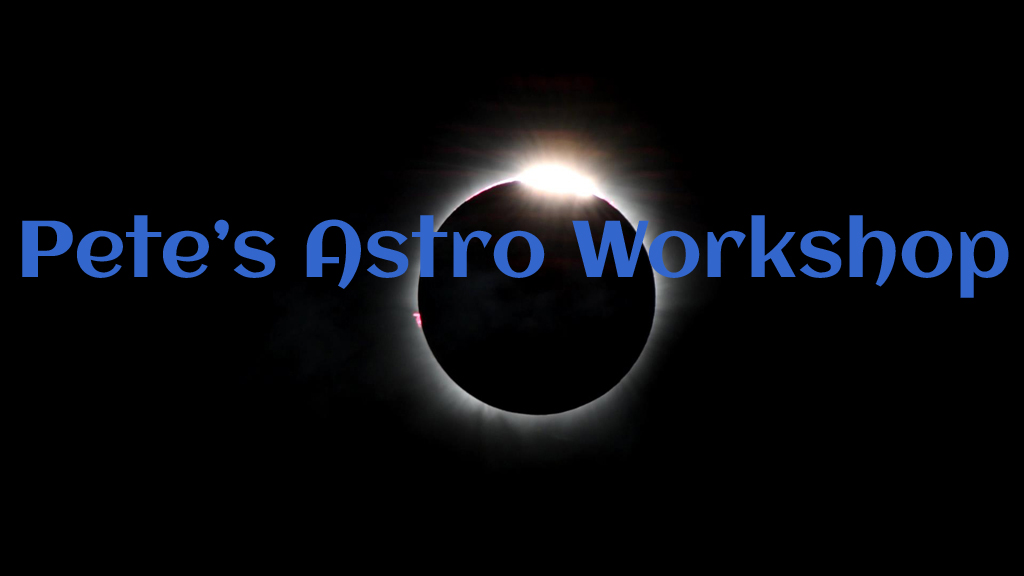M13 (2023 update)

I published an image of M13 in 2020. Since then some of the processing tools in PixInsight have been enhanced while other new ones have been added, so I decided to process the image again, and the result is shown above.
For those who are interested, the main advances have come in the areas of contrast stretching and sharpening, both due to new processes developed by Russ Croman who has used AI and neural net techniques to produce new tools that are very impressive. The main difference this has made is in the appearance of the stars, which are tighter and with smaller cores than in the 2020 effort. This enables better resolution across the core of the cluster.
The rest of the text below repeats my earlier post.
M13, the great globular cluster in Hercules, is a favourite of northern observers as its position places it almost overhead on summer evenings.
Theoretically at the threshold of naked-eye visibility, it shows up very well with binoculars while telescopes of increasing size show more and more stars.
This image shows a range of star colours, which are a good indication of the stars’ surface temperature, blue being hotter than red. The colours are portrayed as accurately as possible using a photometric colour correction process.
Even the brightest stars in this image are below naked-eye visibility, the orange coloured star displaying prominent diffraction spikes being magnitude 6.9. At the other end of the scale there are at least 5 faint background galaxies in the image, the brightest of which, to the lower right of the cluster, vertically below the brightest star, is IC 4617, a magnitude-16 spiral. There are also three faint galaxies in the bottom right-hand corner (which is also the direction of north in the image), and one near the bright star at bottom left. These are 17th and 18th magnitude objects.


The image at left above shows a zoomed view of the central core where stars are densely packed. As an illustration, if we define a cube in space whose side is the distance from the Sun to its nearest neighbour, Proxima Centauri, then if that cube were placed at the centre of M13 it would contain about 200 stars. (It may also contain a black hole: some globulars are thought to have central black holes but this has not been conclusively proved as yet).
The image above right shows a zoomed view of the galaxy IC 4617. It displays quite well at this scale, being about 54 arcseconds across. Its bright core identifies it as a Seyfert galaxy and it is estimated to be 550 million light years distant.
Comparing M13 with my earlier post of 47 Tucanæ we find that physically they are of comparable size, if anything M13 being slightly larger at about 145 light-years in diameter. However 47 Tuc appears to contain many more stars, numbered in the millions compared with several hundred thousand in M13. The other factor that makes 47 Tuc brighter is that it is only about half as distant, at 13,000 light years.
For comparison I have reproduced both images below at the same scale, from which it can be seen that 47 Tuc (right) appears larger in the telescope, but both globulars are spectacular objects.
It it interesting to speculate how the sky would appear from near the centre of a globular cluster, with hundreds of stars within a few light years. We have 20 first-magnitude stars in our skies: imaging what it would be like to have 200!.


Propeller? What propeller?
In some images of M13 the dust lanes surrounding the core can be seen to form the shape of a 3-blade propeller. If visible at all, it usually appears as a faint shadow, though many excellent images of the cluster do not show it at all. I believe this depends on the levels of contrast and brightness in that area of the image, which vary with the different processing techniques employed.
In the main image above I can only see one, or perhaps two blades of the ‘propeller’, but you have to know where to look if you haven’t seen it before.
In an effort to bring it out I tweaked the image of the core area, reducing contrast and overall brightness, as shown in the image below at left. It may help to view it through partly-closed eyelids. The same image appears at right, with the position of the propeller’s blades shown with white lines.


Technical details (main M13 image):
Planewave CDK 14″ scope, FLI Proline P9000 CCD camera, Astrodon LRGB filters. Total exposure time 18¼ hours split as: Luminosity 25×10 mins, Red 6×10 mins plus 16×15 mins, Green 11×10 mins plus 13×15 mins, Blue 6×10 mins plus 12×15 mins. The Lum exposures had to be kept to 10 minutes to avoid saturating the core. Combination of two imaging runs, June 2019 and June 2020 with different position angles (which accounts for the extra diffraction spikes in the star at top of frame).
Acquisition software: ACP Expert, Maxim DL, PWI Focus.
Image acquired remotely from the IC Astronomy site at Oria, Spain.
Processed in PixInsight: standing pre-processing with 3x drizzle scale-up as raw images are under-sampled. Post processing sequence: RGB images: DBE, Linear Fit, Channel Combination, B/G Neutralization, Photometric Color (sic) Calibration, SCNR, MLT noise reduction. Lum image: Deconvolution, MLT noise reduction, TGV De-noise, HDR Multiscale Transform, Local Histogram Equalization, MLT sharpening, plus a final tweak from Curves. Total processing time around 12 hours.


0 Comments